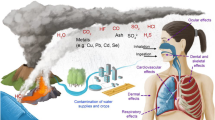Abstract
In view of the present environmental awareness, the reduction of spray wastage, which in turn lessens environmental contamination, can be achieved by reducing spray volumes and improvement on spray efficiency through the use of correct ranges of spray droplet sizes. Published data on droplets collected by some insects consistently suggest that the optimum droplet sizes lie below 60 µm.
An experiment was conducted in a wind-tunnel to assess the locust collection efficiency when subjected to a spectrum of droplet size ranges with a view to determine the optimum droplet size.
Locusts were induced to fly in a wind-tunnel and then exposed to spray droplets which were produced by a spinning disc atomiser. Droplets collected on antennae, head, abdomen, legs and wings were sized and counted. The collection efficiency at wind-speeds ranging from 2 m/sec to 6 m/sec was calculated for the different body parts in the droplet size range 10–40, 40–60 and 60–80 µm. The calculated collection efficiency for the 10–40 µm size range was comparatively higher for all locust body parts.
Résumé
A la lumiére de l’actuelle prise de conscience en matiére d’environnement, une diminution de residus d’aérosols qui, à son tour minimise la contamination de l’environnement peut s’obtenir avec la réduction des volumes de l’aérosol et l’amélioration de l’efficacité d’atomisation à travers l’emploi de gouttelettes atomisables d’une certaine taille. Des données publiées sur les particules atomisées qui sont collectées par certains insectes suggérent de toute évidence que les tailles optima de gouttelettes se situent en dessous de 60 µm.
Dans le but de déterminer cette taille optimale de gouttelettes, une expérience a été menée dans un tunnel aérodynamique pour évaluer l’efficacité de leur collection par le criquet. Cela a consisté à soumettre ce dernier à un éventail de tailles de gouttelettes atomisées.
Les criquets auxquels on a permis de voler dans le tunnel aérodynamique ont ensuite été exposés aux gouttelettes produites par un disque atomiseur tournoyant. Des particules atomisées recoltées au niveau de l’antenne, de la téte, de l’abdomen, des membres et des ailes ont été clasées et comptées. L’efficacité de collection avec un soume de vent reglé à des vitesses variant entre 2 m/sec et 6 m/sec a été calculée pour les différentes parties du corps, avec des gouttelettes ayant des tailles de 10–40, 40–60 et 60–80 µm. L’efficacité de collection pour la taille de 10–40 µm était comparativement plus élévée pour toutes les parties du corps du criquet.
Similar content being viewed by others
References
Barry J. W., Ciesla W. M., Tysowky M. and Ekblad R. B. (1977) Impaction of insecticide particles on Western spruce budworm larvae and Douglas fir needles. J. Econ. Entomol. 70 (3).
Hadaway and Barlow (1965) Studies on the deposition of oil droplets. Ann. Appl. Biol. 55, 267–274.
Himel C. M. and Moore A. D. (1969a) Spray droplet size in the control of spruce budworm and cabbage looper. J. Econ. Entomol. 62 (4), 916–918.
Kennedy J. S., Ainsworth M. and Toms B. A. (1949) Laboratory studies on the spraying of locusts at rest and in flight. Anti-Locust Bull. 2, 64.
Latta R., Anderson L. and Rogers E. (1947) The effect of particle size and velocity of movement of DDT aerosols in a windtunnel on the mortality of mosquitoes. J. Wash. Acad. Sci. 37, 397–407.
Lofgren C. S. (1970) Ultra-low-volume application of concentrated insecticides in medical and veterinary entomology. Annu. Rev. Entomol. 15, 321–342.
Lofgren C. S., Anthony D. W. and Mount G. A. (1973) Size of aerosol droplets, impinging on mosquitoes as determined by electron microscope. J. Econ. Entomol. 66 (3), 1084–1088.
MacCuiag R. D. (1958) Spray collecting area of locusts and their susceptibility to insecticides. Nature, London 182, 479.
MacCuaig R. D. (1962) The collection of spray droplets by flying locusts. Bull. Entomol. Res. 53, 111–123.
May K. R. and Clifford R. (1967) The impaction of aerosol particles on cylinders, spheres, ribbons and discs. Ann. Occup. Hyg. 10, 83–95.
Poles S. G. and Vinson S. B. (1967) Effect of drop size on persistence of ULV malathion and comparison of toxicity of ULV and EC malathion on tobacco budworm larvae. J. Econ. Entomol. 62, 89–94.
Sawyer K. F. (1959) Aerial curtain spraying for locust control. A theoretical treatment of some of the factors involved. Bull. Entomol. Res. 41, 439–457.
Smith C. M. and Goodhue L. D. (1942) Particle size in relation to insecticide efficiency. Ind. Eng. Chem. 34, 490–493.
Spillman J. J. (1976) Optimum droplet sizes for spraying against flying targets. Agric. Av. 17, 32–38.
Townsend A. A. (1948) Theoretical effects of drop size on the collection of spray by flying insects. Anti-Locust Bull. 2, 64.
Uk S. (1977) Tracing insecticide spray droplets by size on natural surfaces. The state of the art and its value. Pest Sci. 8, 501–509.
Weis-Fogh T. (1956) Biology and physics of locust flight II. Phil. Trans. B239, 459–510.
Wooten N. W. and Sawyer K. F. (1954) The pick up of spray droplets by flying locusts. Bull. Ent. Res. 45, 177–197.
Author information
Authors and Affiliations
Rights and permissions
About this article
Cite this article
Ndayanbo-Mugisha, F. Wind-Tunnel Studies on the Collection of Airborne Spray Droplets by Flying Locusts. Int J Trop Insect Sci 15, 215–222 (1994). https://doi.org/10.1017/S1742758400015496
Received:
Accepted:
Published:
Issue Date:
DOI: https://doi.org/10.1017/S1742758400015496




